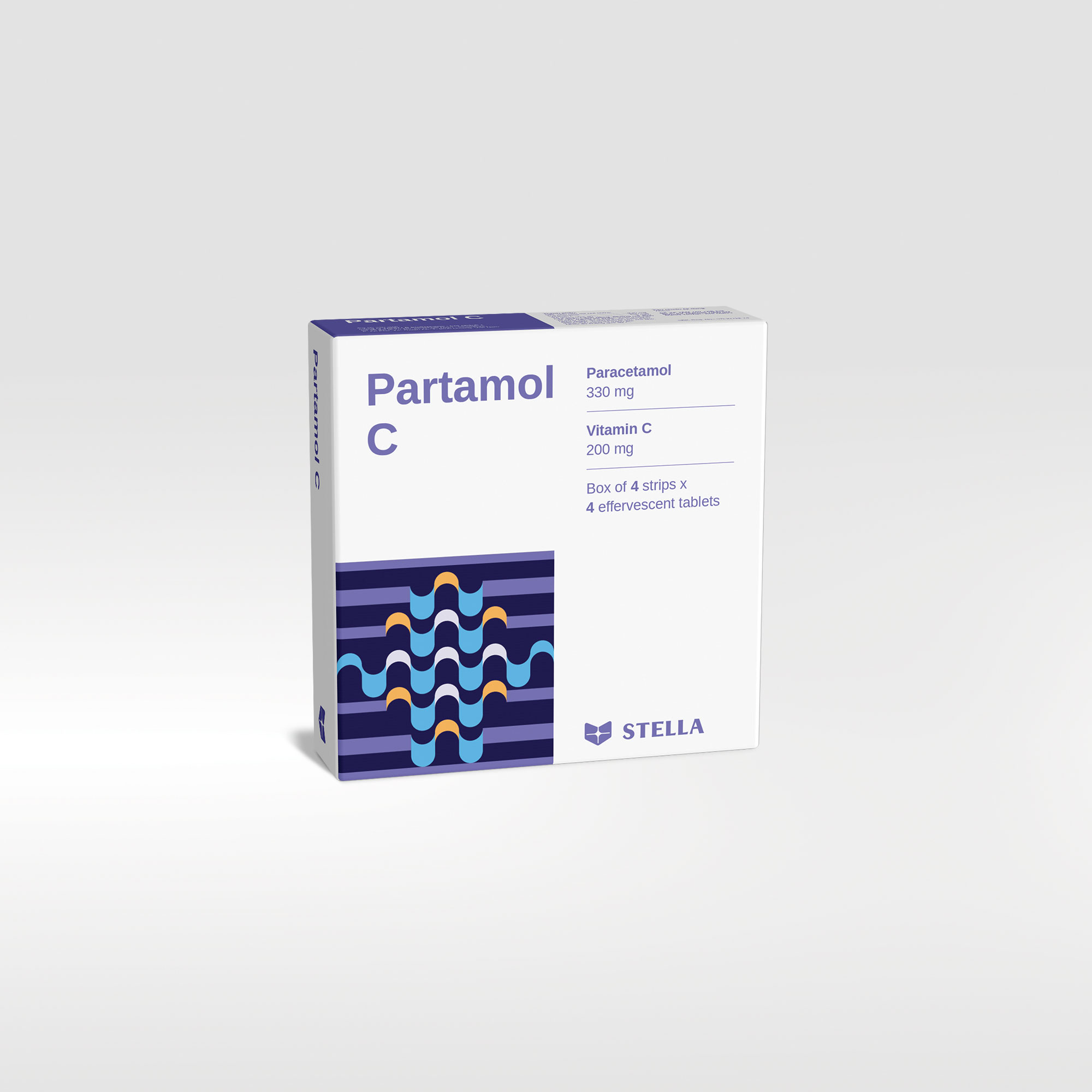Partamol C OTC
Partamol C is fixed-combination of paracetamol and vitamin C that is indicated for treatment of mild to moderate pain and fever.
| Pack size | Box of 16 tablets, 20 tablets |
| Shelf-life | 24 months |
| Composition | Paracetamol, Vitamin C |
| Dosage forms and strengths | Effervescent tablet: Paracetamol 330 mg; Vitamin C 200 mg |
Product code :















